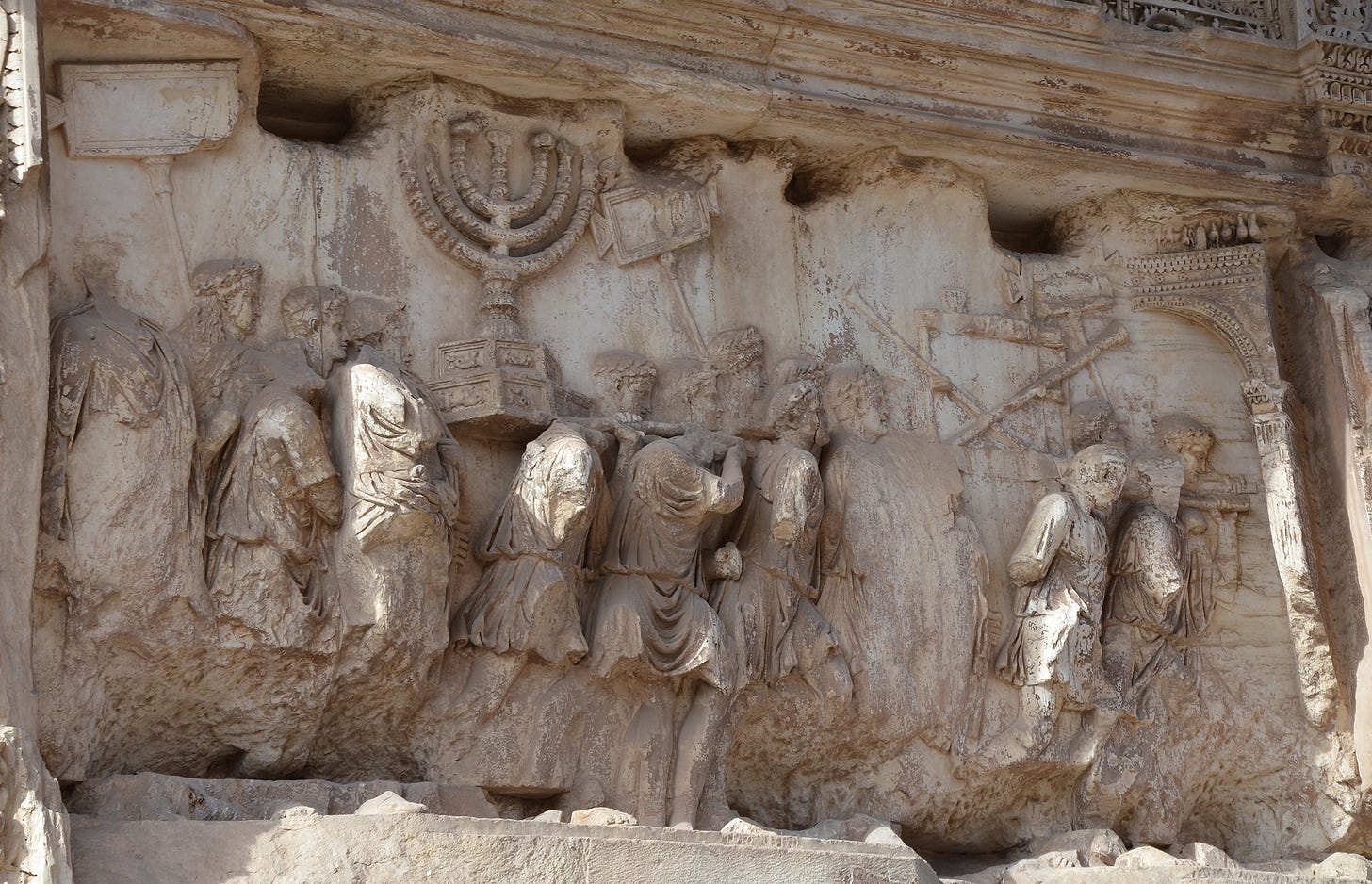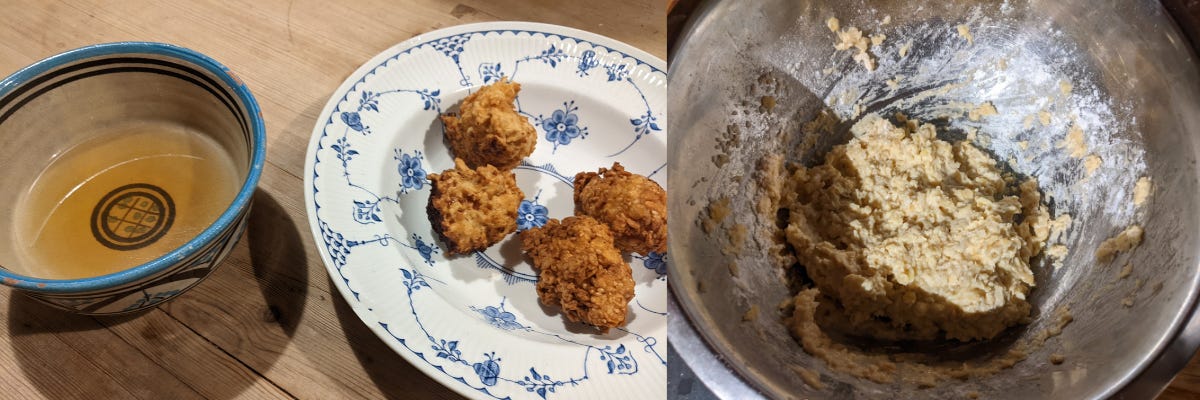The south inner panel of the Arch of Titus, Rome, showing the sack of Jerusalem, A.D. 81
The Menu
Ashimisha (lentil fritters)
The Music
Ancient Echoes - San Antonio Vocal Arts Ensemble
The Time
The Song of Songs was written by someone who clearly loved food. Found in the last section of the of the Tanakh (Hebrew bible), it also appears in a rather more tepid and censored version in the Christian Bible. But lets be clear, this poem is unlike any other in either version. It doesn’t concern itself with law, or wisdom, or God for that matter, but is entirely engrossed in the goings on of a man and woman who wildly fancy each other and would rather like to take each other’s clothes off.
Most importantly for our purposes, both of them are deeply preoccupied with food. This shepherdess and winemaker feed each other raisin cakes, apples, pomegranates. They have a particular love for figs (naturally), gazelles (delicious) and start to compare each other’s teeth to sheep. Then it’s onto an intriguing complaint of how foxes ruin vineyards, a (potential?) compliment that his shepherdess’s hair resembles a flock of goats and finally all the wine, saffron, cinnamon, honeycomb and milk, that you can ft into one night of passion. And of course, in the midst of all this, we find ashishim – a red lentil fritter topped with honey. This pair were nothing if not well fed.
Not only is this poem a beautiful text, but an extremely useful window for getting a sense of what was in the larders of Israelites two thousand years ago. I think everyone could do with sitting down and eating a nice lentil fritter, whether you’re in 2nd century Jerusalem or indeed east London.
The Cooking
While the recipe in the Tanakh is relatively detailed compared to most of the recipes from antiquity I’ve come across, it still lacked key information for this 21st century cook. In essence, ashishim were a deep fried fritter of lentils and sesame seeds, served with or soaked in honey. Modern day recipes often focus on the lentils being boiled, but there are strong similarities to Indian dhal bhajias, where the lentils are soaked, but uncooked, before being fried.
So, with minimal information, but relatively few ingredients or specified cooking instructions, we tried it both ways – one batch with boiled lentils, the second with soaked but uncooked lentils. For both we then ground with sesame seeds and mixed with an egg. Adding a good amount of salt for bot,h we then shaped the fritters into elongated spheres, and then into the deep pan of oil.
We made a honey syrup –heating honey with a bit of water, making it much better for dipping.
The Eating
In the ultimate test, the uncooked lentils won. The ashishim were pleasingly crunchy on the outside, and the sesame taste really permeated the heart of the fritter and were excellent eaten with the honey syrup. The version with the pre-boiled lentils texturally became a bit mealy, and while fine, were just less interesting to eat.
Using uncooked lentils would have been a lower energy method of cooking for your 2nd century cook and so stacks up as being an easy savoury snack you can imagine picking up on the streets of Roman era Jerusalem on your way to seduce the local winemaker.
The Song of Songs by Gustav Moreau, 1893
The clean up
The Song of Songs only made the cut into the bible as it was allegedly written by King Soloman himself and thanks to the particularly good taste of a handful of rabbi’s who just rather liked it as a poem.
With joy-killing inevitably the Christians who latterly turned up tried their best to make this into an allergory about God’s love of his church on earth, but this really feels like a stretch.
Just one century left to go! Nearly there.





